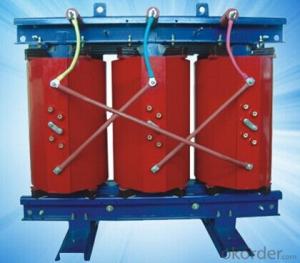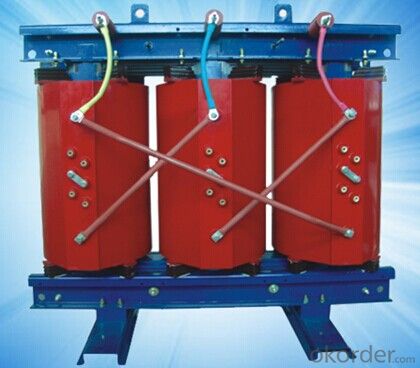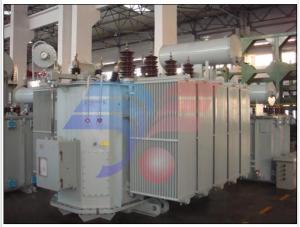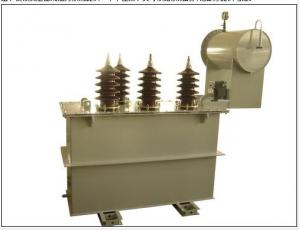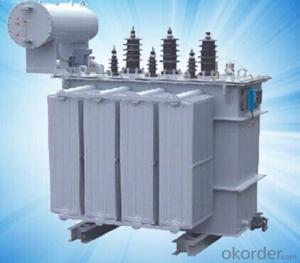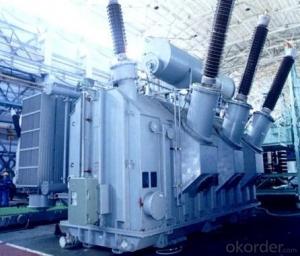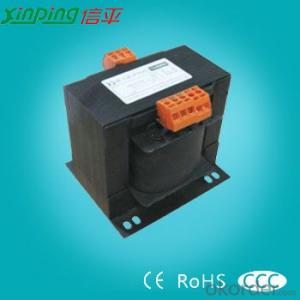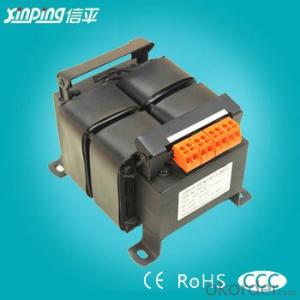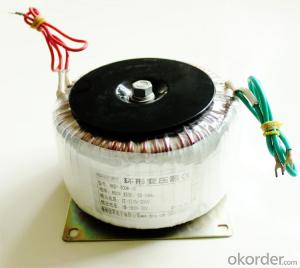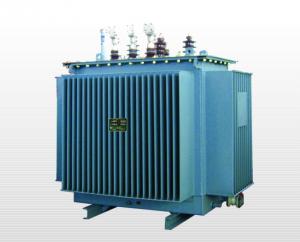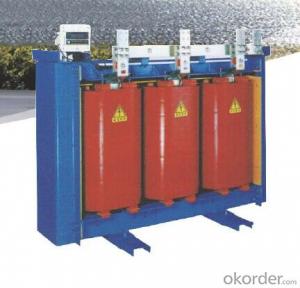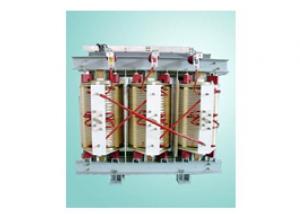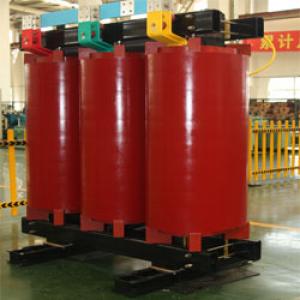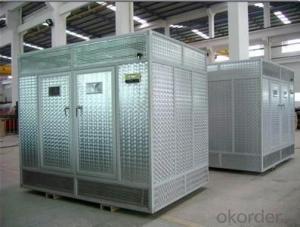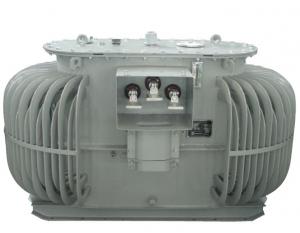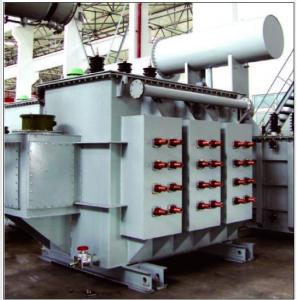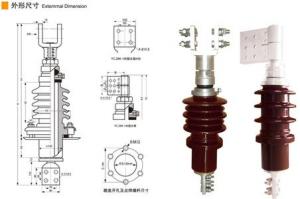SC(B)9-30~2500 Epoxy Resin Dry Type Power Transformer
OKorder Service Pledge
OKorder Financial Service
You Might Also Like
SC(B)9-30~2500 epoxy resin dry type power transformer is produced by advanced checkout equipment and strict technology,high quality material and scientific recipes .it has material and sentific recipes.it has strongpoint of high reliability and long service life.according to different operation environmen,it can be equipped with the shells of different protection grades or noshell.it is regarded as regeneration product of oil immersed transformer.it is appicable to high rise building,emporium,airport,tunnel,chemical plant,nuclear power plant,shipping and other important or special places

- Q: For my proposed new aluminium extrusion factory I ve the load of 250 kw heater and 670 HP of motors.Whats the kva rating of the transformer I should go for?Pls advice.
- the kva rating of the transformer shows that the power factor of the load has been taken care of
- Q: What are the technical parameters of the transformer?
- C, rated current (A): transformer in the rated capacity, allowing long-term through the current. D, no load loss (kW): when the rated frequency of the rated voltage applied to the end of a winding, the other winding open when the active power. And the core silicon steel sheet performance and manufacturing process, and the applied voltage. E, no-load current (%): When the transformer in the rated voltage under the secondary side of the load, the current through a winding, generally expressed as a percentage of the rated current. F, load loss (kW): the transformer secondary winding short circuit, in a winding rated tap position into the rated current, then the power consumption of the transformer. G, the impedance voltage (%): the secondary winding of the transformer short circuit, in a winding slowly increase the voltage, when the secondary winding short-circuit current equal to the rated value, then the voltage applied once the general. As a percentage. H, the number of phases and frequency: three-phase beginning to S said, single-phase start with D said. China's national standard frequency f is 50Hz. Foreign countries have 60Hz (such as the United States).
- Q: im doing a power point and i want to know all i have is that it got started in 84', but who owned it at first and who ownes it now and is it a product? but basically i need a site or a person to tell me how it got to now and i need a site that has nice pics of the first transformers to 2009
- Yep, it replace into an 80's comic strip placed out with the help of way of the Hasbro company company company,(who additionally advertised the everyday GI Joe toys and cartoons). The exhibits have been long working commercials for the ever evolving line of toys. The Transformers have been the form till Hasbro have been given right here out with the previous Transformers action image (anime) which pissed each and all the fams off by using fact of certainty they killed off Optimus precise and then dwindled the numerous characters into obscurity with the objective to sell their new line of robots. you will are available the process most of the previous episodes on youtube.
- Q: i have just pulled out the flayback transformer from a tv there are many pins at the bottom and 3 wires at the top. i just want to make some good sparks. one wire is orange, one red and the other red with a sucker cap on the end. can i plug the transformer straight into the wall socket. i hear it needs a saw tooth voltage, is this already built in. please help i just want some good sparks.
- A 'flyback' transformer won't do anything but blow the breaker if you plug it into the wall. They're designed to run at 15,750 Hz. and yes, they do couple a 'sawtooth' waveform out to the horizontal deflection coils of the 'yoke' around the base of the CRT which deflect the electron beam to produce an image. If you want some -great- sparks, go out on the 'net and look ou plans for a 'Tesla Coil'. I've built a couple of those that would draw an arc several inches long. And since they're very low-current (on the secondary side) they're quite safe to play with. HTH, Doug
- Q: Can a transformer having a given VA rating at 50Hz handle more power at a higher frequency, say, 300Hz or 400Hz?I want to build an inverter to run an 11 watt compact fluorescent lamp. Since these devices rectify the supply directly, there does not seem to be any good reason to feed the lamp with 50Hz.If my understanding is correct, the core has to be able to store up to one half-cycle's worth of energy in the magnetic field (which will then be released out of the secondary winding in the form of electricity) to avoid going into saturation and overheating. So at twice the frequency, it should be possible to push twice as much power through for the shorter half-period without saturating the core. (Actually, probably a little less than twice as much, as there will be more resistive heating; but transformer wire is often slightly thicker than it really needs to be, just because it's less likely to break in the winding machine.)So can I over-run a transformer this way, or is there some gotcha that I've missed?
- The equation V 4.44fNaB determines what is required for a transformer to avoid saturation. V is the voltage, f is the frequency, N is the number of turns of wire in the winding, a is the area of the core, and B is the peak magnetic flux density. The transformer has presumably been designed so that the peak flux density is as high as it can be without saturating the core. For an existing transformer, V/f a constant. If you increase f, you can increase V so that V/f remains constant. However, the hysteresis losses increase in proportion to the frequency increase and the eddy current losses increase in proportion to frequency squared. In addition, skin effect will increase the copper losses at higher frequencies. Reducing the copper losses by reducing the current would compensate for the skin effect. Reducing the copper losses would tend to compensate for the increased iron losses, but it is hard to say how much a cooler coil will compensate for a hotter core.
- Q: can u use a 220v to 12v transformer step down transf, switch the primary as the secondary, and vice and make it a 12v to 220v transformer.
- This is a 12V center tapped transformer. Yes, you can take 2 transformers, and connect the secondaries together, apply 220V on one, and get 220V back on the other side. One would be a step down, the other a step up. The transformer doesn't care which way you go. The 220V output will be limited to the rating of the transformer. Say you have a 100VA transformer. If you divide the VA rating by the voltage, you will get the amount of current. In this case 454mA. On the 12V side, you can determine current as well. 100/12 8.3A. That is how much you would have to supply to get full output.
- Q: Why the computer water does not use transformer oil
- by the economic losses are not large. Strong electricity is different, the water requirements must be pure water in order to achieve low, medium and high pressure insulation requirements, but pure water production and maintenance of pure water need a higher cost, it can only use insulating oil.
- Q: A 2300/230 V step down transformer is rated at 70 kVA and 60 Hz. Its windings have the following resistances and inductances : Rp 0.093 ohms, Xp0.280 ohms, Rs 0.00093 ohms and Xs 0.00280 ohms. The transformer's rated current at the secondary is 3261 A. Assume that a10 from 2300/230 V and calculate the no load voltage for unity 0.7 lagging and 0.7 leading power factor.
- this is quite a typical question. there will be many examples similar to it
- Q: How do I select a transformer connection group?
- Both transformers are center-point direct-to-ground transformers. Dyn11 wiring group of the transformer because of its high-voltage winding is triangular wiring, so when the user produces three and three times the harmonic, can be formed in the triangular winding circulation, resulting in magnetic flux to eliminate this harmonic pollution for the grid. The Yyn0 transformer because there is no triangular winding, without this function. If only an independent power supply of small capacity transformer, you can use Yyn0 transformer, such a transformer everywhere, good production. If there is a transformer that may be supplied in parallel with other transformers, or as a backup power source for other power supplies, the same wiring group as other transformers should be selected. If it is recommended for large-capacity industrial transformers Dyn11 transformers are recommended to reduce the contamination of the grid by three or three times the number of harmonics.
- Q: a lamp is connected to a secondary coil ( 80 turns) of a transformer by long leads which have a resistance of 2.5 ohms. Primary coil( 1600 turns voltage is 220v). the power input to the primary coil is 44w. 1) what is the voltage across the secondary coil2) what is the current across the secondary coil3) what is the electrical power dissipated in the lamp
- Assuming perfect transformer. turns ratio 1600/80 20:1 secondary voltage is 220/20 11 volts primary current is 44/220 0.2 amps secondary current is 0.2 x 20 4 amps drop across wires is 4 x 2.5 10 volts. This assumes the 2.5 ohm number is for both leads, not each. voltage across lamp is 11v – 10v 1 volt power in lamp is 1 v x 4 a 4 watts. .
Send your message to us
SC(B)9-30~2500 Epoxy Resin Dry Type Power Transformer
OKorder Service Pledge
OKorder Financial Service
Similar products
Hot products
Hot Searches
Related keywords
